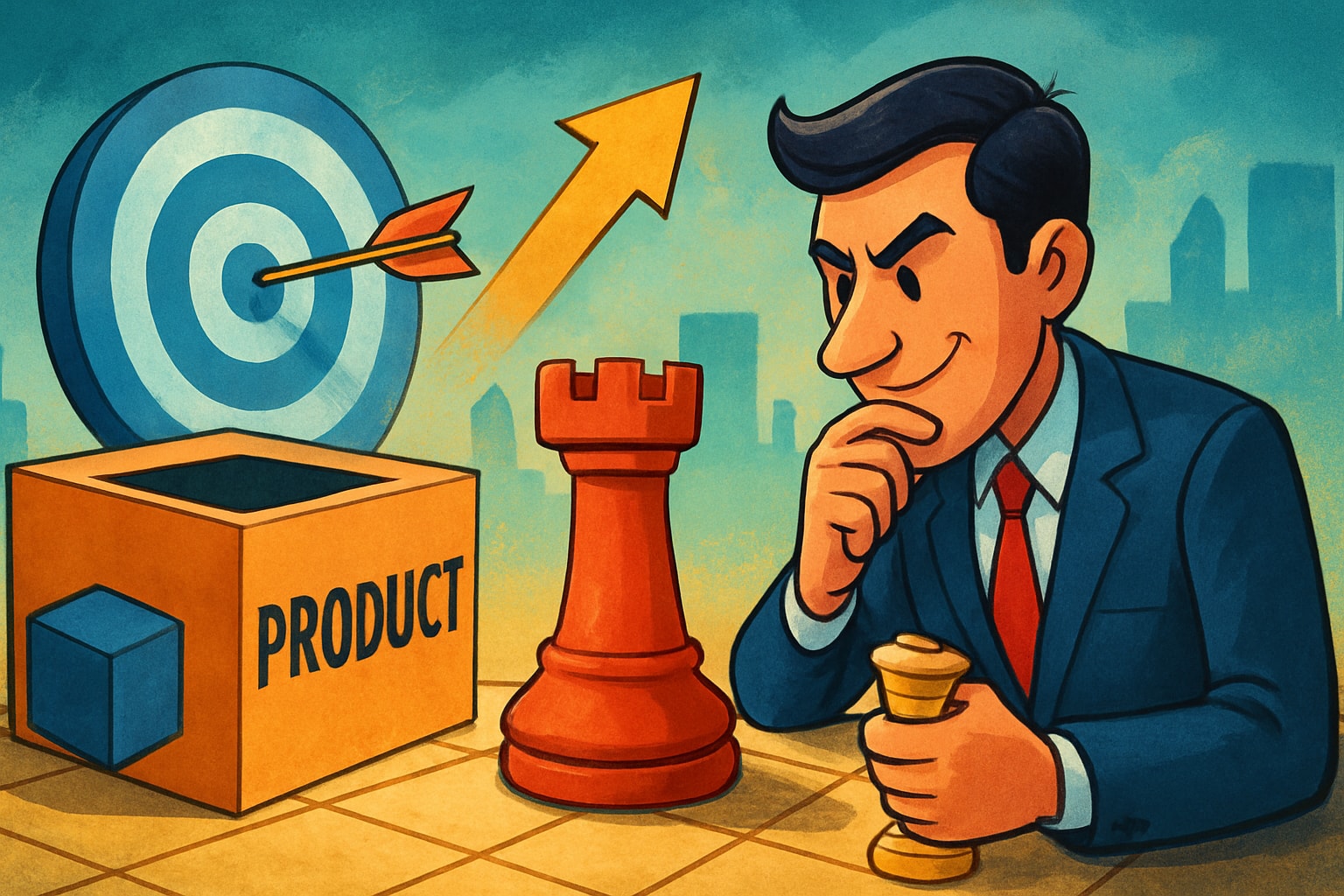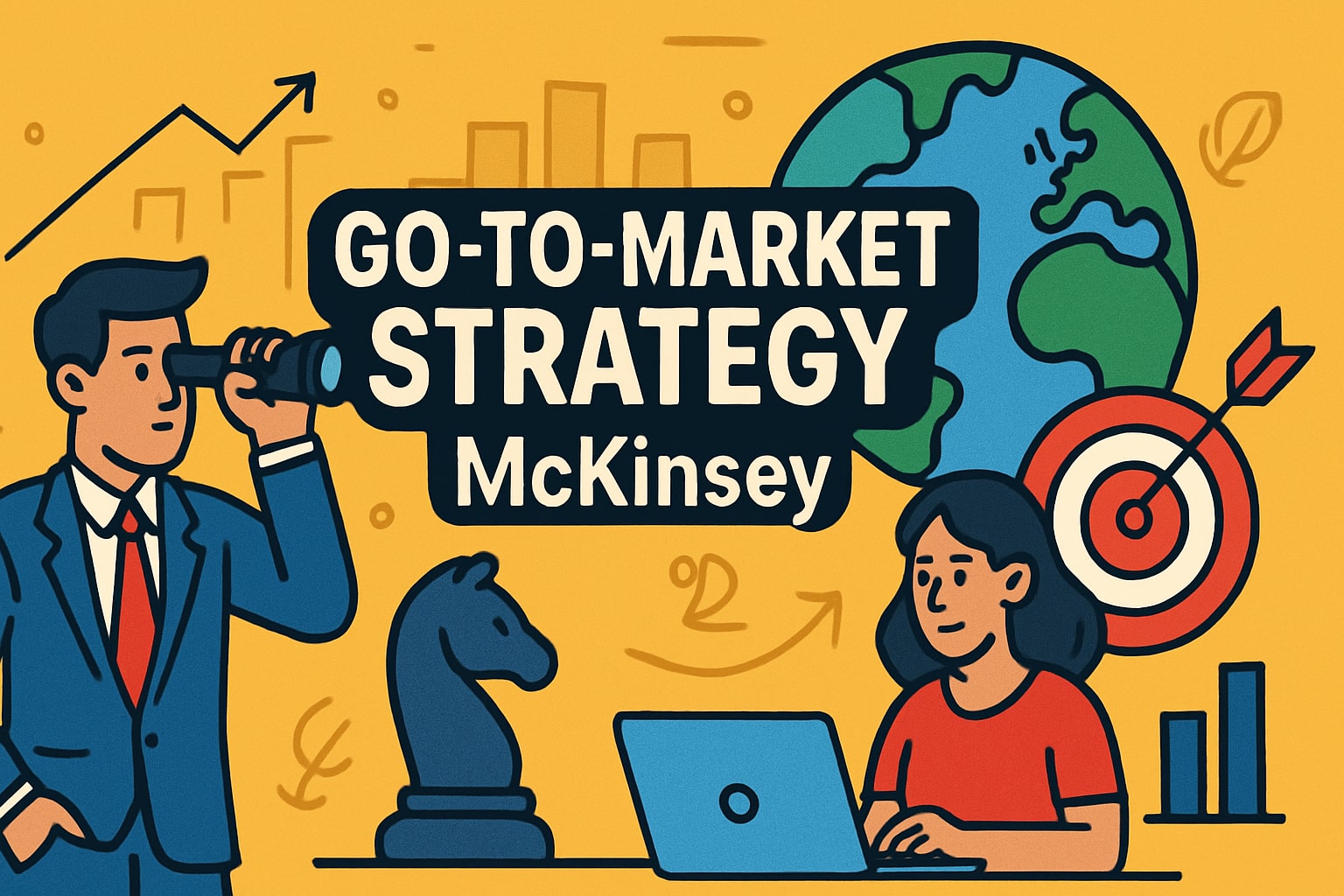Product Market Strategy Guide for Success in 2025


In 2025, the landscape for B2B SaaS is shifting faster than ever, driven by breakthroughs in Agentic AI, rising buyer expectations, and relentless competition. Companies that want to achieve true growth can no longer rely on outdated playbooks. Instead, a modern product market strategy is essential for aligning product, marketing, and sales into a single engine for measurable results. This guide delivers a step-by-step, data-driven blueprint to help you navigate these new go-to-market realities, leverage AI-powered insights, and drive pipeline and revenue growth. Ready to transform your approach and lead the market? Let’s dive in.
Understanding Product Market Strategy in 2025
A winning product market strategy is more than a plan—it's a living roadmap aligning your product’s capabilities with evolving market needs and clear revenue goals. Unlike product management, which focuses on building the right features, or traditional marketing, which amplifies awareness, this strategy unifies product, marketing, and sales for measurable business growth.
| Aspect | Product Market Strategy | Product Management | Traditional Marketing |
|---|---|---|---|
| Primary Focus | Alignment & revenue impact | Feature delivery | Brand & demand generation |
| Key Metrics | Pipeline, ARR, sales velocity | Feature adoption | Reach, engagement |
| 2025 Approach | AI-driven, customer-centric | Agile, iterative | Campaign-based |
In 2025, B2B SaaS leaders face a new landscape shaped by:
- AI-driven market analysis: Real-time insights power faster, smarter decisions.
- Agentic AI: Autonomous agents automate research, segmentation, and even campaign execution.
- Dynamic customer segmentation: AI continuously updates buyer personas based on intent and firmographics.
The importance of measurable outcomes is growing. Companies now track pipeline growth, ARR, repeatable sales cycles, and more. Yet, only 5% of product marketers feel their role is fully understood (Toptal), underscoring the need for clarity and alignment.
Consider Apple’s benefit-focused messaging, which puts user value at the core, or Billie’s market-driven campaigns that adapt quickly to shifting customer sentiment. These examples show how a modern product market strategy thrives on customer-centricity, data, and AI augmentation.
To dive deeper into frameworks and best practices, explore Product Marketing Strategy Best Practices for actionable insights tailored to the SaaS landscape.
A successful approach in 2025 means embracing unified, data-driven, and AI-powered execution—ensuring every team moves as one toward measurable growth.

Key Components of a Modern Product Market Strategy
In 2025, a winning product market strategy is built on dynamic market intelligence and real-time data. AI-powered tools now enable B2B SaaS teams to monitor competitors, track trends, and identify new opportunities as they emerge. For example, leading platforms use Agentic AI to scan the competitive landscape, alerting teams to shifts in pricing models or feature launches within hours.
Market Intelligence and Research
Continuous research is at the heart of a modern product market strategy. Teams leverage AI for competitor benchmarking, uncovering white space, and forecasting demand. Real-time analytics help companies spot changing buyer behaviors, which is critical for adjusting quickly. Consider how enterprise SaaS firms use automated dashboards to visualize market shifts, making strategic pivots faster and more effective.
Audience, Positioning, and Pricing
Precise audience targeting drives every aspect of product market strategy. By combining behavioral data and firmographics, SaaS companies refine ICPs and develop rich personas. AI segmentation tools dynamically adapt as customer needs evolve. Strong positioning means articulating a unique value proposition that resonates deeply with each segment. Messaging is crafted to highlight differentiation and real business outcomes. Pricing is no longer static; value-based and competitor-informed models allow companies to optimize for both conversion and retention.
GTM Execution and Performance
Unified go-to-market planning aligns product, marketing, and sales into one high-performing team. Operational dashboards, sales playbooks, and AI-powered enablement tools ensure consistent execution. Companies using Agentic AI automate onboarding, personalize customer journeys, and monitor KPIs such as trial sign-ups, conversion rates, and NPS. To streamline GTM execution, many leverage Go-to-Market Plan Templates that integrate best practices and real-time feedback loops for continuous improvement.
Modern product market strategy is a living system—powered by AI, measured by outcomes, and always evolving to meet the demands of B2B SaaS growth.

Step-by-Step Guide to Building Your Product Market Strategy
Building a robust product market strategy in 2025 requires more than intuition; it demands a data-driven, stepwise approach that aligns product, marketing, and sales teams. The following guide breaks down each critical phase, combining real-world examples with actionable tactics powered by AI and Agentic Automation.

Step 1: Set SMART Goals and Define Success Metrics
Start your product market strategy by setting SMART goals that are clear and measurable. For instance, aim for a 20% MRR increase in Q1 or a 15% boost in demo-to-close rates with AI-powered lead scoring.
- Align objectives across product, marketing, and sales to unify direction.
- Use dashboards to monitor leading indicators like pipeline growth and lagging ones such as ARR and churn.
- Example: A SaaS firm leverages Agentic AI to predict and track user engagement, ensuring every team shares the same definition of success.
This step ensures everyone pursues the same outcomes, laying a strong foundation for growth.
Step 2: Conduct Market and Competitive Research
Effective product market strategy hinges on understanding the landscape. Use Agentic AI to analyze competitors’ pricing, messaging, and feature sets in real time.
- Assess total addressable market, growth rates, and regulatory risks.
- Identify unmet customer needs and whitespace.
- Example: Landscape research reveals a gap in enterprise workflow automation, prompting a SaaS company to tailor solutions for that niche.
AI-driven research means you can spot opportunities and threats faster than ever before.
Step 3: Develop Data-Driven Personas and Segmentation
Next, build personas using behavioral, firmographic, and intent data. Agentic AI tools segment markets dynamically, identifying shifts in customer pain points and priorities.
- Map personas to product features and use cases for precise targeting.
- Example: A B2B SaaS vendor uncovers a new vertical—healthcare—thanks to real-time AI segmentation.
- Update segments continuously to reflect market evolution.
This approach keeps your product market strategy sharply focused on the right customers at the right time.
Step 4: Craft Positioning, Messaging, and Differentiation
Define your unique value proposition and key differentiators. Create positioning statements that resonate with each segment, using AI for personalized messaging at scale.
- Address specific pain points and desired outcomes for each persona.
- Example: An enterprise SaaS highlights Agentic Automation as the core differentiator, tailoring campaigns per vertical.
- Ensure consistency in messaging across sales, marketing, and support channels.
A strong product market strategy transforms features into compelling stories that drive engagement and trust.
Step 5: Build and Execute the Go-to-Market Plan
Choose the best channels for each segment—direct sales, PLG, or partnerships. Align teams with unified playbooks and enablement content, integrating Agentic AI for campaign automation, lead nurturing, and onboarding.
- Set KPIs and feedback loops for rapid iteration.
- Example: Launch a coordinated GTM campaign with AI-driven content and automated outreach.
- Avoid common pitfalls by learning from others’ mistakes; for more, see Why Most Go-to-Market Strategies Fail.
Execution is where your product market strategy comes alive, driving measurable pipeline and ARR impact.
Leveraging Agentic AI and Automation for GTM Advantage
Agentic AI is rapidly transforming how B2B SaaS teams approach product market strategy. Unlike traditional automation, Agentic AI uses autonomous agents that learn, adapt, and act across research, customer engagement, and GTM optimization. By integrating these intelligent agents, companies can align product, marketing, and sales with unmatched speed and precision.
Consider these examples of Agentic AI in action:
- Real-time competitor monitoring, instantly surfacing shifts in messaging or pricing.
- Automated persona updates that reflect live behavioral and intent data.
- Predictive analytics for sales enablement, scoring leads and surfacing upsell opportunities.
- Dynamic onboarding journeys tailored to each user segment.
One SaaS provider achieved a 30% boost in pipeline velocity after deploying Agentic AI to qualify leads and automate onboarding. The result was faster sales cycles and higher conversion rates, proving the tangible impact of AI-driven GTM execution.
Integration is key. Agentic AI thrives when connected to CRM, marketing automation, and product analytics platforms, creating a unified data ecosystem. According to AI Marketing Trends in 2025, this unified approach not only accelerates time-to-market but also enables hyper-personalization at scale.
Looking ahead, expect product market strategy to harness AI for:
- Continuous experimentation (A/B/n testing) without manual intervention.
- Real-time pricing and offer adjustments.
- Autonomous campaign management across all GTM channels.
Agentic AI is no longer a futuristic concept. It is the engine driving measurable ARR growth, repeatable sales cycles, and a sustainable competitive edge for SaaS leaders.

Measuring, Optimizing, and Iterating Your Product Market Strategy
In today's fast-paced SaaS landscape, measuring the impact of your product market strategy is essential for sustainable growth. Tracking adoption rates, customer engagement, conversion metrics, and NPS provides a clear picture of what drives your pipeline and revenue.
Harnessing AI, especially Agentic AI, allows B2B SaaS teams to automate performance tracking and quickly identify gaps. Real-time analytics, as highlighted in the AI in the Marketing Industry Report 2025, enable experimentation at scale, such as A/B testing messaging or onboarding flows. For example, one SaaS company achieved an 18% increase in paid conversions after Agentic AI optimized their trial onboarding.
To ensure your product market strategy evolves, gather qualitative insights through user interviews, surveys, and behavioral analytics. Close the loop by sharing learnings across product, marketing, and sales, fueling continuous improvement. This unified approach is core to high-performing GTM teams, as discussed in Go-to-Market Strategy Consulting Insights.
Key actions for ongoing optimization:
- Monitor KPIs: adoption, conversion, NPS, upsell rates
- Use Agentic AI for real-time tracking and automated insights
- Run experiments to refine messaging and onboarding
- Collect feedback and share it across all teams
- Iterate quickly to stay ahead in 2025
Agility and data-driven iteration are the heartbeat of a successful product market strategy, ensuring your SaaS company adapts and thrives as market dynamics shift.
We’ve just walked through the evolving landscape of product market strategy for 2025, from harnessing AI to aligning your teams for real, measurable growth. If you’re a founder or growth leader looking at your roadmap and wondering how to put these steps into action—or maybe you just want a sounding board to talk through your biggest go to market challenges—let’s connect. I’ve seen firsthand how a focused conversation can spark the clarity and confidence you need to move forward. Ready to turn strategy into scalable results for your SaaS? Book Your Personal Intro Call and let’s write your next success story together.

Latest From
The Blog
Go To Market Strategy Consulting Guide For 2025 Success

Go To Market Strategy McKinsey Guide For Success 2025

Crossing the Enterprise Chasm: A Practical Guide to Sales-Led Growth (SLG)


Let's Build The Future Together







.jpg)